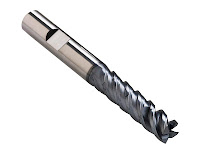THINK FAST: Do you know how many cutting tools exist in your shop at this exact moment? Do you know how much disposable tooling your company uses, or even what type of insert you need to order at any given time?
If you can’t confidently answer these questions, it’s probably time to consider an advanced vending program for your operations, especially if you’re trying to manage a whole slew of part numbers.
Need some convincing? Here are the top 12 reasons—not in any particular order—as to why owning a point-of-use automated inventory control device with reporting and order management capabilities – such as our new compact SupplyPod – makes perfect business sense.
1. Inventory control devices keep things organized, allowing employees to get the items they need to do their jobs in a matter of seconds as opposed to wasting productivity time rummaging through a tooling abyss.
2. For shops that use the “locked supply cabinet” approach, inventory control devices save supervisors valuable time because they no longer have to stop what they are doing to distribute tooling to employees.
3. Companies can effectively manage their tooling supplies by having the ability to set dispensing limits by day, month or even shift.
4. Inventory control devices reduce overall tooling spends as well as eliminate stock-outs and UPS red shipments.
5. If an employee dispenses a tool that typically machines up to 150 parts and he/she returns within the hour to check out the same tool, the company is privy to the fact there might be something wrong with a machining process.
6. Inventory control devices can force tool regrinds instead of dispensing new tools, which helps play a role in reducing tooling spends.
7. Rapid refill features ensure fast, accurate tool replenishment without any repackaging requirements, thereby improving efficiency and eliminating stock shortages.
8. Employees are more accountable for the tools they use because inventory control devices manage item issuance and monitor tool usage with take/return, check-in/check-out and serialization functions. Essentially, this level of control allows management to know who dispensed what and for what reason.
9. Inventory control devices help eliminate excessive or wasteful consumption because employees can no longer “hoard” tooling that could become lost or accidently discarded.
10. Purchasing agents spend less time on tooling requisitions because inventory control devices with reordering and order management capabilities make it quick and easy to maintain adequate stock of critical tooling.
11. Inventory control devices are simple to use and easy to implement into any work environment. The SupplyPod, for instance, only requires a power source and Internet connection for full functionality. It interfaces with modern ERP systems for continuously updating business environments.
12. Most inventory control devices are customizable or come in a variety of configurations, which enables them to adapt to the constant changes within the manufacturing industry.
Overall, one of the easiest ways to bring more efficiencies and cost savings into your operations is by optimizing your tooling stock. Advanced inventory management systems, which includes the Seco SupplyPod, can help get you there as well as give you a competitive advantage over the other guys.
If you have questions about point-of-use automated inventory control devices, including our SupplyPod, please don’t hesitate to contact me.
About the Author
Magnus works closely with Seco customers to provide them with business solutions that increase their productivity and profitability. With a mechanical engineering degree from Wennstromska University, he began his metal cutting career as a shift supervisor for the insert quality control department at Seco Tools AB. In 2000, he joined Seco Tools U.S. as manager of production control for NAFTA insert manufacturing and took over his current role as business solutions manager in 2006. In his spare time, Magnus enjoys traveling, golfing, hockey and spending time with his family. Contact Magnus at mtillman@secotools.com.





